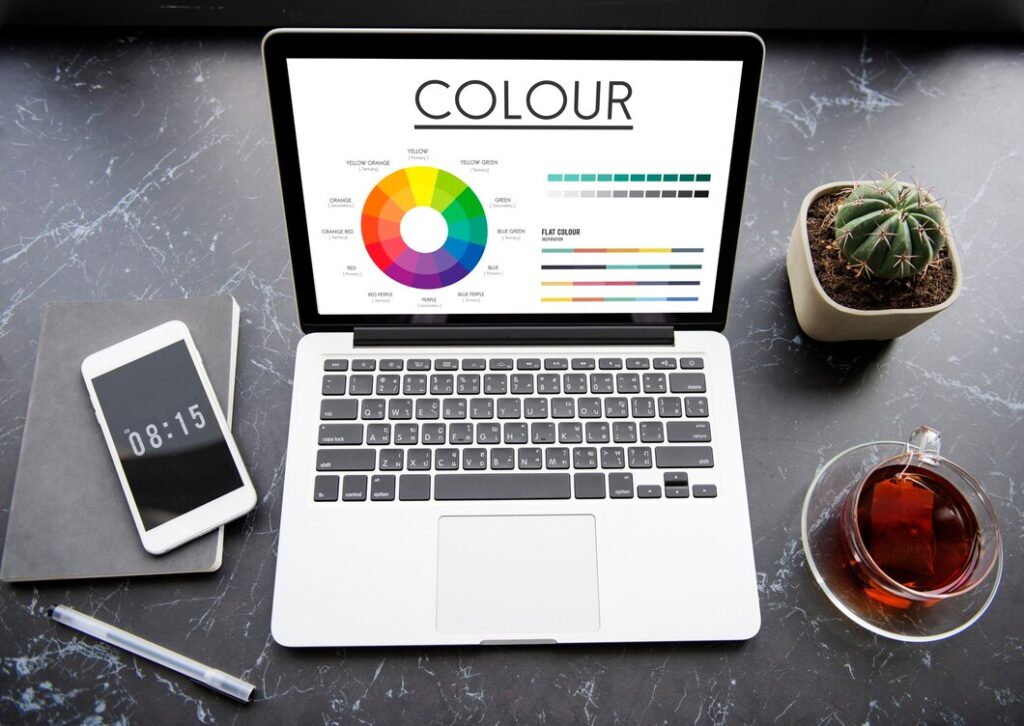In web design, color is crucial in creating engaging and impactful user experiences. The strategic use of color can evoke specific emotions, influence user behavior, and enhance website engagement.
By understanding the principles of color psychology, web designers can make informed decisions to create visually appealing and practical websites.
This blog post will explore how color psychology can be leveraged in web design to captivate users and improve their overall experience. Therefore, continue reading before you look for Seattle web development.
The Basics of Color Psychology
Color psychology studies how colors affect human emotions, behaviors, and perceptions. Different colors have distinct psychological effects that can create specific moods or convey messages. Warm colors like red, orange, and yellow can evoke energy, excitement, and warmth.
These colors are often associated with passion, urgency, and enthusiasm. They can effectively grab attention and create a sense of urgency, making them ideal for call-to-action buttons or promotional banners.
On the other hand, cool colors such as blue, green, and purple promote calmness, trust, and relaxation. These colors are commonly associated with serenity, reliability, and creativity.
They work well in healthcare, finance, or technology industries, where a sense of trust and professionalism is essential. Cool colors can also create a soothing and inviting atmosphere, making users feel more at ease while browsing a website.
Building Emotional Connections
Color has the power to evoke emotions and establish a connection with users. Web designers can create an emotional bond with their target audience by selecting the right color palette. Each color has its emotional connotations, and by leveraging these associations, designers can shape the user’s perception of a brand or website.
For example, vibrant and energetic colors such as red or orange suit websites target a young and dynamic demographic. These colors exude energy, enthusiasm, and excitement, which align well with youthful and adventurous personas.
On the other hand, muted and soothing tones such as pastel blues or soft greens may be more appropriate for websites related to wellness or luxury. These colors create a sense of calmness, relaxation, and sophistication, resonating with audiences seeking tranquility or indulgence.
Enhancing Brand Identity and Recognition
Color plays a vital role in brand recognition and identity. Consistency in color usage across a website helps users associate specific colors with a brand, facilitating brand recognition and recall.
When users repeatedly encounter the same color scheme in various brand touchpoints, it becomes ingrained in their memory, making it easier to identify the brand in the future.
Web designers should strategically incorporate the brand’s primary colors, ensuring they complement the overall design while maintaining a solid brand presence. The chosen colors should align with the brand’s values, personality, and target audience.
Using Contrast to Guide Attention
Contrast is a powerful tool in web design that helps guide users’ attention to essential elements on a webpage. Web designers can use contrasting colors for call-to-action buttons, links, or key messages to make these elements stand out and attract user engagement.
The contrast creates a visual hierarchy, directing users’ focus to the most critical areas of the website. For instance, a bold red button on a predominantly blue webpage will naturally draw attention, signaling users to act.
The stark contrast between the red button and the blue background immediately grabs the user’s eye and prompts them to click. Similarly, contrasting colors for hyperlinks or important headlines help users quickly identify clickable elements and essential information.
Cultural and Contextual Considerations
It is essential to consider cultural and contextual factors when selecting website colors. Different cultures attribute diverse meanings to colors; what may symbolize positivity in one culture could carry negative connotations in another.
Furthermore, the nature of the website’s content and its target audience should also guide color choices. For instance, a healthcare website might incorporate calming colors to promote a sense of trust, while a technology-oriented site may employ vibrant colors to convey innovation and excitement.
Conclusion
Color psychology is a powerful tool in web design that can significantly impact user engagement. By understanding the psychological effects of colors and leveraging them strategically with the help of the expert Seattle web development, web designers can create visually appealing and emotionally resonant websites.
The effective use of color can build strong emotional connections, reinforce brand identity, guide attention, and account for cultural and contextual considerations.


